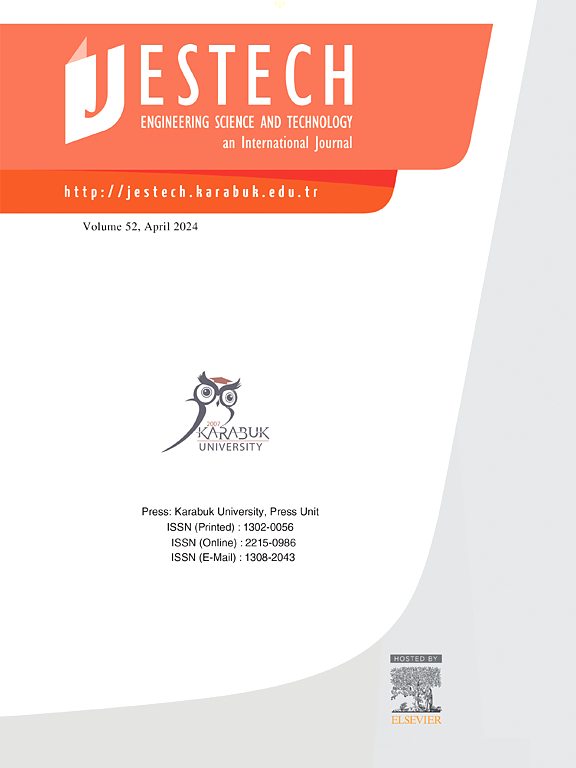地震灾后建筑垃圾预测分析
IF 5.4
2区 工程技术
Q1 ENGINEERING, MULTIDISCIPLINARY
Engineering Science and Technology-An International Journal-Jestech
Pub Date : 2025-05-05
DOI:10.1016/j.jestch.2025.102078
引用次数: 0
摘要
建筑及拆卸废物的妥善管理包括了解其来源、产生和有效的收集方法。这在经历快速城市化和工业化的发展中国家尤其重要,在这些国家,新建和重建旧的、质量较低的建筑是常见的做法。政府鼓励重建脆弱的建筑物,往往是由于危险的条件或自然灾害,如地震,进一步促进了大量的cdw的产生。本文对2023年2月6日发生的Kahramanmaras地震和Hatay地震以及预计发生在土耳其伊斯坦布尔的地震所产生的cdw的质量和体积进行了估算。此外,还计算了这些cdw中的矿物部分废物(MFWs)和废铁废物(SIWs)的数量,以及它们的经济价值。Kahramanmaras和Hatay地震的CDW废物产生量定量估计分别为396,473,616 吨和293,684,160 m3,伊斯坦布尔地震的CDW废物产生量分别为393,456,358 吨和291,449,154 m3。Kahramanmaras和Hatay地震的可回收材料(MFWs和SIWs)的经济价值分别为935,677,734欧元和1,268,715,571欧元,伊斯坦布尔的经济价值分别为928,557,005欧元和1,259,060,346欧元。本文章由计算机程序翻译,如有差异,请以英文原文为准。
Analysis of construction and demolition waste prediction post-earthquake disasters
The proper management of construction and demolition wastes (CDWs) involves understanding their origins, generation, and efficient collection methods. This is especially crucial in developing countries experiencing rapid urbanization and industrialization, where new construction and the reconstruction of older, lower-quality buildings are common practices. Governmental encouragement for the reconstruction of weak buildings, often due to dangerous conditions or natural disasters like earthquakes, further contributes to the generation of vast amounts of CDWs. In this study, the masses and volumes of CDWs resulting from the Kahramanmaras and Hatay earthquakes that occurred on February 6th, 2023, and the anticipated Istanbul earthquake in Turkiye were estimated. Additionally, the amounts of mineral fraction wastes (MFWs) and scrap iron wastes (SIWs) within these CDWs were calculated, along with their economic values. The quantitative estimations of waste generation for CDW were determined as 396,473,616 tons and 293,684,160 m3 for Kahramanmaras and Hatay earthquakes, and 393,456,358 tons and 291,449,154 m3 for the anticipated Istanbul earthquake, respectively. The economic values of recyclable materials (MFWs and SIWs) were calculated as €935,677,734 and €1,268,715,571 for Kahramanmaras and Hatay earthquakes, and €928,557,005 and €1,259,060,346 for Istanbul, respectively.
求助全文
通过发布文献求助,成功后即可免费获取论文全文。
去求助
来源期刊

Engineering Science and Technology-An International Journal-Jestech
Materials Science-Electronic, Optical and Magnetic Materials
CiteScore
11.20
自引率
3.50%
发文量
153
审稿时长
22 days
期刊介绍:
Engineering Science and Technology, an International Journal (JESTECH) (formerly Technology), a peer-reviewed quarterly engineering journal, publishes both theoretical and experimental high quality papers of permanent interest, not previously published in journals, in the field of engineering and applied science which aims to promote the theory and practice of technology and engineering. In addition to peer-reviewed original research papers, the Editorial Board welcomes original research reports, state-of-the-art reviews and communications in the broadly defined field of engineering science and technology.
The scope of JESTECH includes a wide spectrum of subjects including:
-Electrical/Electronics and Computer Engineering (Biomedical Engineering and Instrumentation; Coding, Cryptography, and Information Protection; Communications, Networks, Mobile Computing and Distributed Systems; Compilers and Operating Systems; Computer Architecture, Parallel Processing, and Dependability; Computer Vision and Robotics; Control Theory; Electromagnetic Waves, Microwave Techniques and Antennas; Embedded Systems; Integrated Circuits, VLSI Design, Testing, and CAD; Microelectromechanical Systems; Microelectronics, and Electronic Devices and Circuits; Power, Energy and Energy Conversion Systems; Signal, Image, and Speech Processing)
-Mechanical and Civil Engineering (Automotive Technologies; Biomechanics; Construction Materials; Design and Manufacturing; Dynamics and Control; Energy Generation, Utilization, Conversion, and Storage; Fluid Mechanics and Hydraulics; Heat and Mass Transfer; Micro-Nano Sciences; Renewable and Sustainable Energy Technologies; Robotics and Mechatronics; Solid Mechanics and Structure; Thermal Sciences)
-Metallurgical and Materials Engineering (Advanced Materials Science; Biomaterials; Ceramic and Inorgnanic Materials; Electronic-Magnetic Materials; Energy and Environment; Materials Characterizastion; Metallurgy; Polymers and Nanocomposites)
 求助内容:
求助内容: 应助结果提醒方式:
应助结果提醒方式:


